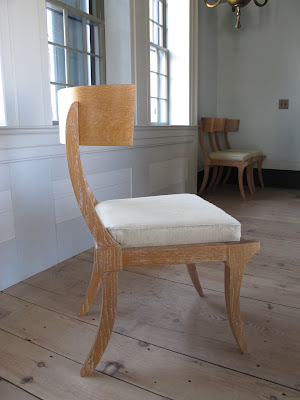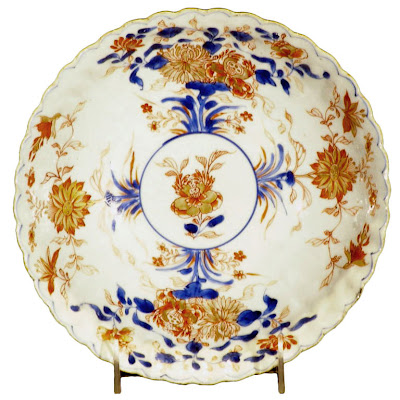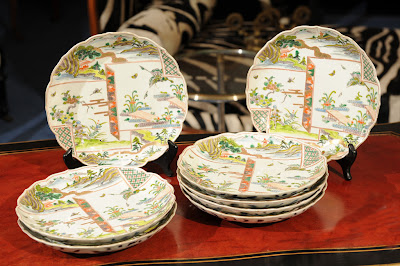But I do have some issues with technology....mainly regarding the manners (or lack thereof) surrounding the when and where and how of technology.
First up: Cell phones.
Cell phones are the greatest inventions since the electric light bulb....but I hate it when some one comes into my shop glued to their phone and stays glued to their phone. There is no way in the world that anybody can talk on the phone and digest my inventory; so if you prefer to stay glued to your phone, please do not walk in my door.
Cell phones are the greatest inventions since the electric light bulb....but I hate it when some one comes into my shop glued to their phone and stays glued to their phone. There is no way in the world that anybody can talk on the phone and digest my inventory; so if you prefer to stay glued to your phone, please do not walk in my door.
Many times I will be having a conversation with a friend or fellow dealer when all of a sudden the phone rings and whatever we were talking about takes a back seat to a phone call that usually could just as easily been returned a bit later (I'm excluding calls regarding URGENT business or family matters). By the time the interrupting call is completed, I've misplaced my train of thought and that moment of connection with a friend is lost. It used to be considered poor manners to simply drop a person in the middle of a conversation to start another conversation with some one else, but not any more.
Many studies have been published regarding the harmful effects of multi-tasking. The human brain is not wired in such a way as to really be able to do more than one thing at a time: 5% of us can multi-task, the rest of us are just wasting a lot of time and really stressing our brains to the point of causing permanent damage. But stress from multi-tasking can also effect most (if not all) cells in our bodies as the fight or flight response is activated under prolonged stressful situations. Also, what does the other person who is involved in the multi-tasking equation feel? How does a child develop proper attachments if he/she is not the focus of a parent's attention. What a child (even an adult) needs is eye-to-eye and heart-to-heart contact with a parent (individual); he needs to have his personhood and importance affirmed by those he loves and with whom he interacts--this cannot happen when a parent is talking on the phone for the majority of time that he is also interacting with the child.
I try to limit personal calls to non-work times and I definitely do not make any business related calls during non-business hours. I just do not like to have to switch gears from one type of interaction to another. And I'm pretty sure that I'm not the only one to respond this way. But because we always have that phone available, it is so hard to set boundaries. This is really true with mothers, we have been conditioned (hooked) to think that we need to respond to "Mommy" the moment we hear that word or the ID of a child pop up on caller ID. Yes, we love them, but our children (husbands, parents, etc.) still need to learn to have a little patience; it builds character and respect.
Next up: Email responses.
I cannot count the number of times I have responded to a business-related email; emailed the requested information/photos, etc. and the person receiving the email and who has requested the information fails to respond. How hard is to to say "Thank you" and hit the send button???
This is true for most types of emails...even to family members: how difficult is it to say "Thank you" and hit send?? I think that it probably takes under 30 seconds.
Next up: Smart phones.
They are great when you need them for important emails on-the-go or during times of absolute boredom. But to check who pinned what on Pinterest 20 times a day? Check in with Twitter 30 times a day?
Please.......the most important goal of our lives is to learn and practice being present in the "moment"--the moment is where everything happens, where creativity arises, where listening happens, where love is experienced and where we are the most human. With a smart phone, who needs to be creative; to listen to one's inner voice; to grow and to stretch and to learn. In fact, we don't even need to be human because the smart phone can do our interactions for us. My gorgeous, adorable youngest baby grand daughter can work an Iphone--she can find her favorite cartoon on her mom's Iphone and hit all of the right buttons by herself to play it and she was only 15 months when she mastered this feat. And this really, really scares me.
Thanks for letting me rant a bit. Jones had his hair done yesterday and looks really handsome.
Have a wonderful week--hopefully it will start raining in the mid-west.
Mary
PS--I still can't figure out why I get that white highlighting?? It doesn't show up on the compose page?? And I'm afraid to mess with it for fear that I will erase the blog post (I already know how that feels)........see I'm still challenged, but I'm working on it.....Mary
I cannot count the number of times I have responded to a business-related email; emailed the requested information/photos, etc. and the person receiving the email and who has requested the information fails to respond. How hard is to to say "Thank you" and hit the send button???
This is true for most types of emails...even to family members: how difficult is it to say "Thank you" and hit send?? I think that it probably takes under 30 seconds.
Next up: Smart phones.
They are great when you need them for important emails on-the-go or during times of absolute boredom. But to check who pinned what on Pinterest 20 times a day? Check in with Twitter 30 times a day?
Please.......the most important goal of our lives is to learn and practice being present in the "moment"--the moment is where everything happens, where creativity arises, where listening happens, where love is experienced and where we are the most human. With a smart phone, who needs to be creative; to listen to one's inner voice; to grow and to stretch and to learn. In fact, we don't even need to be human because the smart phone can do our interactions for us. My gorgeous, adorable youngest baby grand daughter can work an Iphone--she can find her favorite cartoon on her mom's Iphone and hit all of the right buttons by herself to play it and she was only 15 months when she mastered this feat. And this really, really scares me.
Thanks for letting me rant a bit. Jones had his hair done yesterday and looks really handsome.
Have a wonderful week--hopefully it will start raining in the mid-west.
Mary
PS--I still can't figure out why I get that white highlighting?? It doesn't show up on the compose page?? And I'm afraid to mess with it for fear that I will erase the blog post (I already know how that feels)........see I'm still challenged, but I'm working on it.....Mary































































